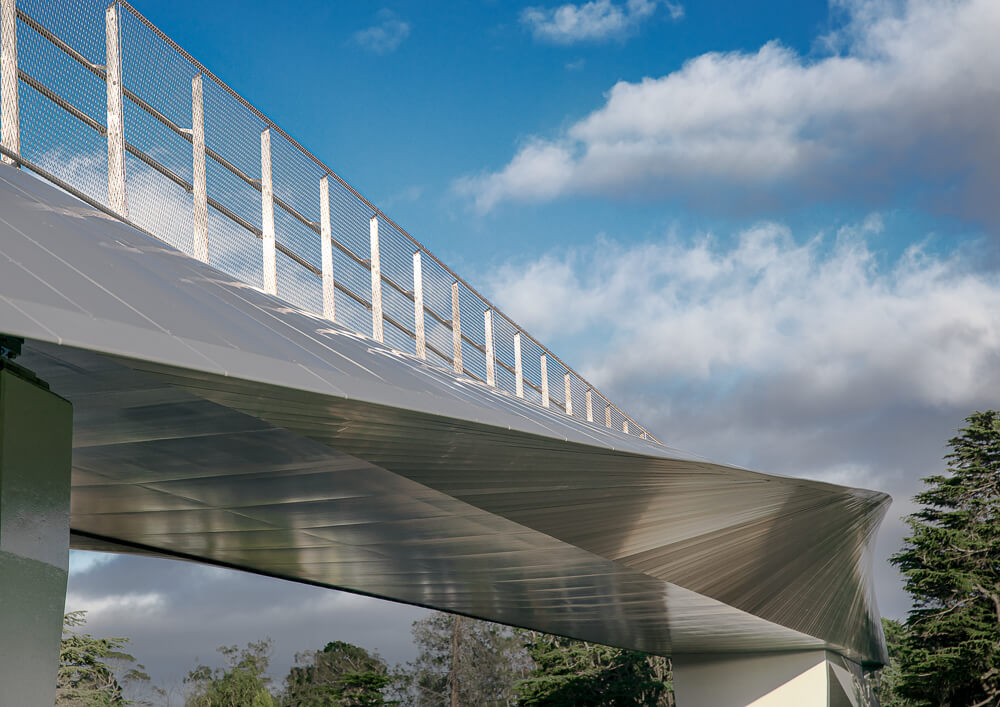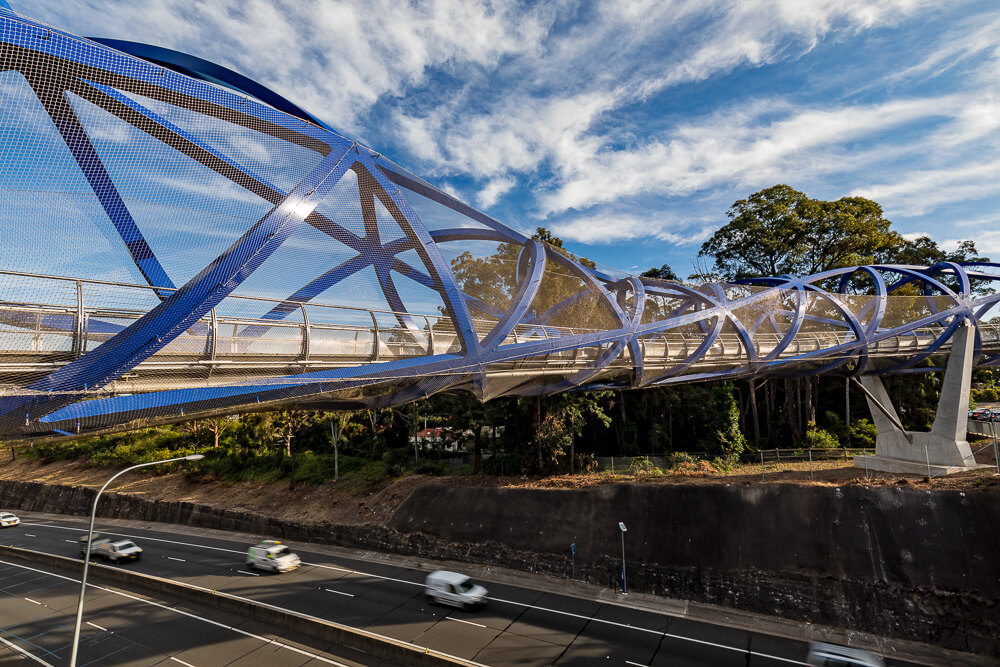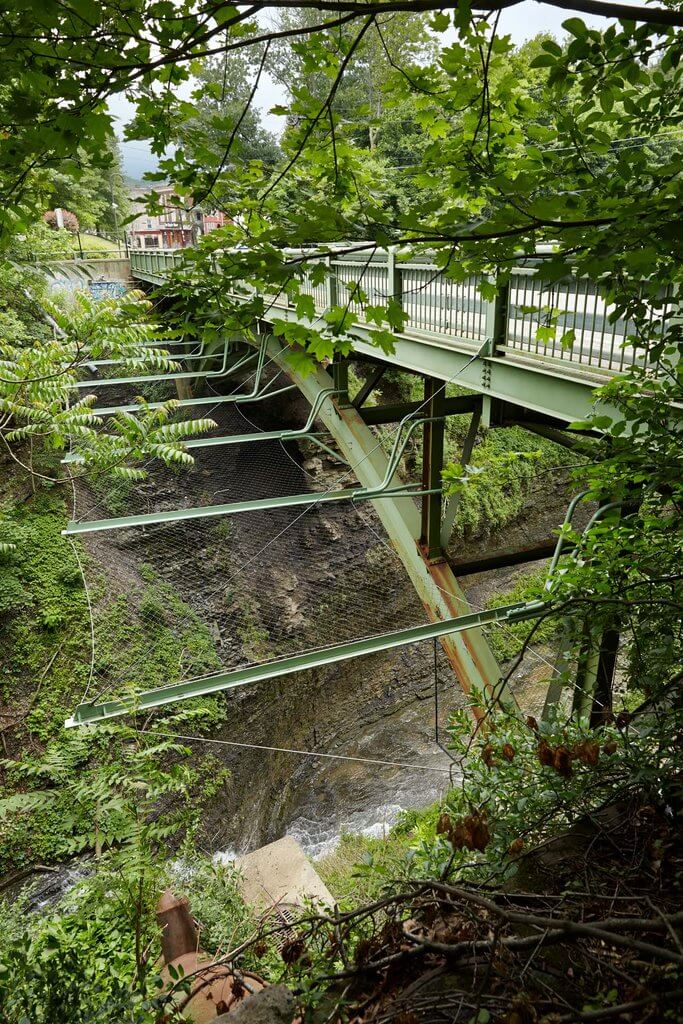The choice of material is key to creating bridge safety barriers that are effective at preventing falls while being durable and unobtrusive in appearance.
Here’s why Webnet mesh is particularly suited to barriers on high-use bridges over roads, waterways and railways.
Why choose Webnet mesh for bridge safety?
Jakob Webnet mesh is generally quick to install and offers a number of advantages for bridge safety barriers.
These include:
- Non-climbability – it can be configured for non-climbability by increasing the height of the barrier and reducing the size of the aperture openings to prevent footholds.
- Strength – Webnet mesh is made of woven marine-grade stainless steel for strength and durability.
- Inconspicuous appearance – it blends in with the architecture of the bridge and its surrounds, allowing for clear viewing and airflow.
- Flexibility – Webnet has a fabric-like quality which makes it ideal for bridges that have irregular or curving geometric shapes.
- Anti-throw capability – it can be used where local road authorities have mandated an anti-throw screen, such as on a footbridge over a busy highway.
- Anti-corrosive features – Webnet mesh has good resistance to wind, rain, pollution and sea spray.
- Low requirements for maintenance – it needs very little maintenance over the long term, helping reduce costs and avoiding regular interruption to bridge usage.

Practical applications for Webnet mesh
Webnet mesh has been used to optimise bridge safety around the world.
Here are a few examples:
Bridge of Remembrance, Hobart Tasmania
This pedestrian and cycle bridge forms an arch shape over the busy Tasman Highway that is 6.5 metres at its highest point. The Webnet safety balustrade is made from 40mm aperture-opening mesh to ensure a lack of footholds for would-be climbers.
The bridge has won numerous awards for design and architecture. This made it especially crucial that the barrier was complimentary to the appearance of the bridge and did not intrude on the design in any way.
Christopher Cassaniti Bridge, Ryde NSW
This footbridge (formerly known as the Lachlan Line Bridge) connects Macquarie Park to North Ryde Station.
The bridge has a unique double-helix structure finished in a bold blue colour, with the addition of an anti-throw Webnet screen that stretches all the way along its outside edge.
Webnet was ideal for the screen due to its transparency and adaptability to the in-and-out curves of the bridge as it crosses over the M2 Motorway. The screen has also been configured to be non-climbable to meet all required safety codes.

Elizabeth Quay Footbridge, Perth WA
Spanning the Swan River is this popular s-curve cycle and pedestrian bridge. The bridge’s mesh barrier was created from a series of Webnet panels that when pieced together, form a balustrade that follows the curved shape of the structure.
The finished result is a graceful and elegant footbridge that can be utilised day and night by the public in safety.
Cornell University bridges, New York USA
A spate of unfortunate suicides led to the addition of under-bridge nets on the campus bridges that cross over some of the region’s spectacular gorges and lakes.
Webnet was chosen as the netting material due to its transparency, strength, and resistance to New York’s changeable climate.
To find out more about the use of Webnet for bridge safety, please get in touch for a chat!






































